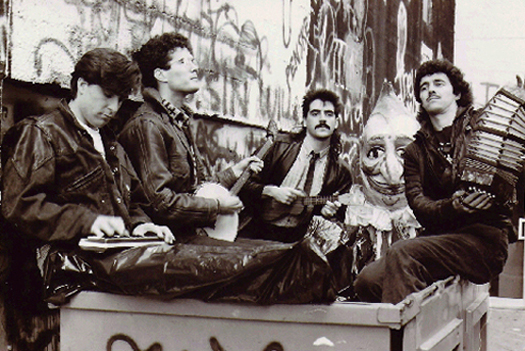• Notes on Cerebellum Blues, Playlists One and Two: Europe, part two of two.
Welcome to my series of posts about how I got into music and songwriting and the events that ultimately led to the 2012 release of my first album. Here are the posts, so far:
1. a little bit of blood, lots of sweat, a few tears (the launch!)
4. from high school to LA and back
7. walking away from music, part one
8. walking away from music, part two
If you read anything that strikes a chord please let me know in the comments section or via email. As always, thank you for reading
Though I did not fully realize what was happening at the time, I can still remember the morning when my life in Europe began to fall apart. I had gone out to get a pastry from the bakery across the street from my apartment and as I was returning I saw my business partner, the person I’d started my translation/copywriting service with, walking up the sidewalk from the canal. He’d been gone for a few days, no one knew where, and through the cold air and under the grey light of an overcast sky I could see he was unshaven and had his hands dug deep into the pockets of his wool duffle coat. He saw me and said hello cheerfully enough but on that morning I knew our business partnership was over.
When we started the business together, I found my partner’s heavy drinking to be entertaining and not a big deal. He seemed so together most of the time. Besides, everyone drank heavily in Munich, it was part of the culture and alcoholism was seen as a choice more than a disease. I confess, too, I didn’t know anything about alcoholism, what it looked like, how to spot it, the damage it could do. But I learned. And in the end, my partner’s problem forced me to face the hard truth that we could not continue to work together and to ultimately to shut down the business. Why didn’t I just look for another partner? I’m not really sure but I do remember how hard the business had been to get going and how much I had spent on business cards and a brochure. I was also painfully aware of the fact that my partner owned most of our client relationships. Actually, now that I think about it, Michelle and I tried to run the business for a brief time but she had her own goals and could only devote a tiny bit of time. And so, I started to think about what to do next and that was when the notion of working in an ad agency and actually creating ads rather than just translating them — a notion that I had been thinking about for awhile — started to truly take root.
I first approached a few of my Munich advertising clients about a copywriting job but they were very clear that there was no way they could rationalize hiring me primarily because I had no experience as an advertising copywriter. Surprisingly enough, the language issue wasn’t that big of a deal because a lot of advertising in Europe is done in English, and a lot of German companies want help with materials for the American market. But lack of experience? Well, that was a deal breaker.
And so I hatched a plan. I would return to the States and get a job with a US agency, work just long enough to build up a decent portfolio (I figured one to two years) and then return to Munich or maybe the UK if my weak German turned out to be a big deal, after all. By early 1993 I was obsessed with my this plan and I was completely confident it would work. In fact, I was infused with a level of confidence I had never before possessed and I believed I would have a fairly easy road into adland and be able to build a strong portfolio quickly. I mean, how hard could it be, right? I had moved to a new country, taught English to former East German border guards, started my own business, gotten black market health insurance, fallen asleep on night trains back to my apartment and missed my stop, driven in Italy. Surely, adland would be not only be glad to hire someone like me (I’d read that agencies liked to hire young writers with interesting life experiences), but also the work would be relatively easy after all I had been through. There was another factor to my chutzpah: Europe had made me an optimist. Go figure, right? Isn’t Europe supposed to breed morose intellectuals? But there I was, very, very far from morose and certainly no intellectual. In a way, my years in Europe had made me more American, more ready for risk, more ready for change than all my years in America had.
And so my new plan supplanted all of my old ones, which had primarily involved my continuing with the marketing translation business and supplementing my unpredictable income with teaching jobs in Europe and Asia (I’d heard that the pay in Japan was especially good). I told myself that advertising was the answer to all my concerns: it would give me a career I would enjoy, money in the bank and the possibility of serious money down the road. And what of music? Yes, I knew I could not live without it but it was different this time. I was realistic and I would just keep music as a hobby, nothing more. More important, what about Michelle? I told myself I was not being a cold-hearted bastard by putting my career ahead of us for the time being but in hindsight I was. I set my departure date for early 1994 and all through 1993 this fact wedged its way between us and pushed us apart.
I walked everywhere in Munich. Neither Michelle nor I had a car, so it was by foot or by bus or by train that we got around the city, but usually by foot. Michelle worked far more than I did and was also enrolled in the university so I was often alone and walking became, in addition to a way to for me get around, a way to pass the time. I had my routes: there was one along the Isar river, which flows through Munich, several emanating fromMarienplatz, Munich’s main square, and a few through Schwabing, the area north of the university and bordering the English Gardens, where I also walked. Ever since I can remember, walking and songwriting have gone together for me but back when I was living in Munich I mostly tried to stop the songwriting thoughts when they started up because I did not want the mental burden of thinking about something I felt was hopeless.
The year was probably 1992 because I remember I was still living in my unheated apartment at 1 St. Bonifatius Strasse and I was out for a long walk in the English Gardens when something completely unexpected happened: a line formed in my mind that I thought would make a good song. I tried to squelch it, to think of something else, to not burden myself with the hope that I might be onto something, but I could not. The line was “people change” and when I got back to my apartment I picked up my guitar and worked out some basic chords for a song that would indeed be called People Change and then spent the rest of the year and some of the next trying to finish the lyrics. But I could never get them to be quite right because I was unsure what the line should mean. Was it about Michelle and me? Was about a past relationship, an imaginary one, someone else’s? I never really could decide although I did, at one point, try to make the song about Michelle and me as we faced down 1993 and my decision to leave Europe at the end of that year. When I finally finished the song just a few years ago, about the only words I kept from the original version were “people change”; for the rest, I stopped trying to write a song about actual events and instead created fictional characters whose lives had some similarity with mine. Regardless, back in 1993, when I finished the first version of People Change, I liked it well enough to want to write more songs, but it would be another 10 years or so before I actually did.
The address of my final apartment in Munich wasPariser Strasse 11. It was a small one-bedroom on the top floor of building that looked just like all the other buildings surrounding it and my only furniture was a futon, a flimsy metal shelf and a wardrobe made of cloth (old apartments in Munich don’t have closets.) Given how few possessions I had, I thought packing it all up would go quickly. It did not. In the end, it took several weeks and when I was done I had made around 10 six-high stacks of standard yellow Deutsche Post boxes piled against the right wall as you entered the living room from the kitchen — an orderly monument to the disorder of my values. How could I be so cold to just leave the way I was? I don’t know. Yes, I was desperate to have a career in advertising and I kept telling myself that once I got a little experience under my belt I would be back but I was probably lying to myself. I remember my last night. It was January, the weather was cold and wet; Michelle and I went to the movies and sawShort Cuts and stayed up most of the night and treated ourselves to a cab to get home. The next day, rain was coming down hard as I took the bus from the terminal to the plane.
When I left the States for Munich in 1990, I consciously and enthusiastically left music behind. But music had stowed aboard with me as I left San Francisco on my maiden voyage to Munich and when I returned it was traveling openly with me in the form of People Change and various song fragments. Most important, though, my years in Europe and the immediate years that followed were when I finally started to really grow up. I became much more aware of life, what I was good about it, what I wasn’t. I made real choices, gave up some beliefs, added a few new ones, took on baggage, found new things to hope for and on and on. But I’ve always been a slow learner and the lessons from all of this, lessons that I think ultimately helped me to finally write some songs I was proud of, took years to sink in. In the meantime, I pursued a career in advertising, but getting a job was a lot harder than I thought it would be and building a portfolio harder still, so I stayed in the States and Michelle and I eventually parted and music once again receded into the background, not to be heard from for years and years.
















